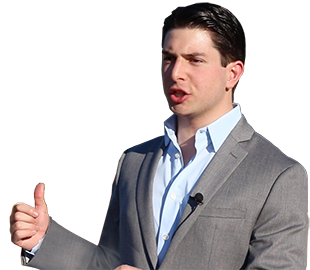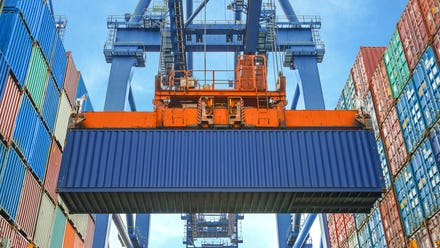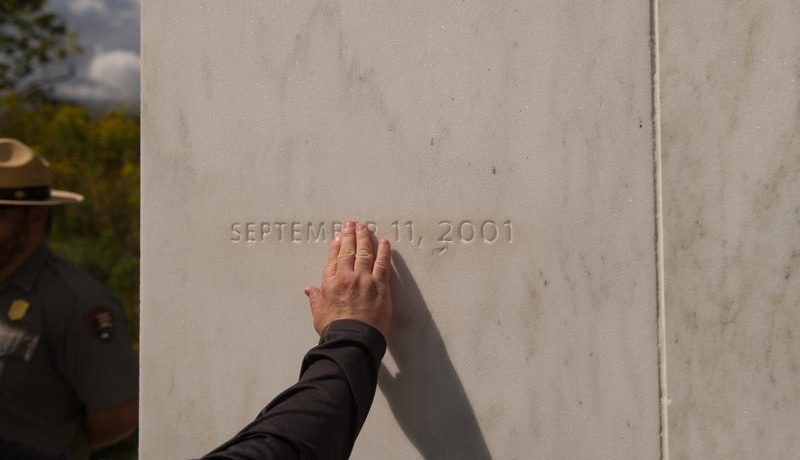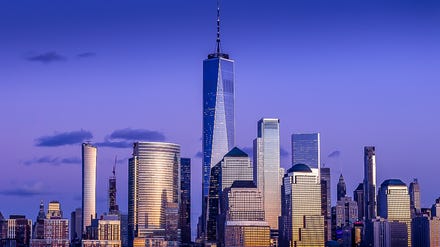
Lee Brice: Garth Brooks is my hero | Kurt's Country
Neil A. Carousso produces NewsNation original “Kurt’s Country” – a celebration of country music and a slice of Americana with host Kurt Bardella.
-
How Businesses Can Leverage Influencer Marketing
Post Views: 661By Joe Connolly and Neil A. Carousso
NEW YORK (WCBS 880) — With many business focusing on growing direct-to-consumer sales online, owners and operators are looking for ways to separate themselves from their competitors. Influencer marketing has taken off as a way businesses are finding new customers during the pandemic.
“We help prospect, negotiate, and then, manage the relationship,” said Rachel Maeng Brown, co-founder and CEO of Loot Agency, on the WCBS Small Business Spotlight, sponsored by Dime Community Bank.
At 25 years old, Brown has already secured marketing contracts with Macy’s, TurboTax, and the NBA’s Dallas Mavericks. She began her social media marketing career as an influencer, herself, when she shared her experiences on the Rutgers University rowing team with her followers, which got the attention of large brands.
“If we’re talking about somebody’s skin ruin like where they have some rough skin and it’s something that happened because they’re in and out of the cold tub so much as being an athlete. And then, they talk about Jergens, because Jergens might be the skincare that they actually use to help them combat their dry skin. It’s a really easy and really seamless transition into using a marketing plan partner,” said Brown of how she began working with Jergens.
The young entrepreneur advises her business and influencer clients to tell their story in an authentic way on social media because it will resonate with people. She notes businesses do not necessarily need to hire an influencer who has a ton of followers. So-called “micro-influencers” can be more effective because they have a dedicated following within a specific area.
“We make sure that the campaign makes sense for their audience because their audience are loyal followers,” said Brown, adding, “You want to make sure that whatever the brand our creators are working with are also brands that our creator would not only use but they would suggest for our audience, too.”
Some business owners have started creating their own content around their products as a way to boost direct sales. For them, Rachel advises, try to emulate what successful micro-influencers are doing.
“Something that’s come about now with this rise of influencers and creators is actually looking at influencers and creators kind as a way to almost replicate, copy and get ideas because there’s already a proven way that is successful for creators to get their message out there whether their a business owner (or) whether their a creator talking about their story,” she explained to Joe Connolly and Neil A. Carousso.
When new NCAA rules in July opened the door for student-athletes to capitalize on their celebrity, Brown launched a new division of her social media marketing agency. Loot Agency is now helping college athletes pursue deals using their name, image and likeness (NIL).
“We not only help student-athletes learn a little bit more about how they can become and influencer and also protect themselves legally, tax wise, all of that, but we also help colleges learn a little bit more for their student-athletes about what this whole space of the NIL is,” she said.
She is proposing endorsement deals for schools and student-athletes with brands that are hoping to tap into the millennial and Gen Z consumer markets. Brown told WCBS 880 that she believes all student-athletes should take business classes and hopes more schools will require financial literacy classes.
Brown launched The Legacy Brand sole proprietorship in 2019 when she took an interest in the business side of influencer marketing and began consulting brands on the types of content that drives digital sales. She co-founded Loot Agency, Inc. in March where she helps creators manage contracts and ink major endorsement deals. She was recently named to Crain’s New York Business’ “20 in their Twenties 2021” list.
See how your business can benefit from micro-influencing on our WCBS Small Business Spotlight video above.
-
WCBS 880 Weekly Rewind: House Democrats Propose Corporate Tax Hikes While New York’s Likely Next Mayor Courts the Business Community
Post Views: 632Produced by Neil A. Carousso
NEW YORK (WCBS 880) — The House Ways and Means Committee proposed raising taxes on corporations and high-income earners to pay for Democrats’ $3.5 trillion social spending plan. The proposal would also end the retirement account loophole that allows people to convert pre-tax retirement savings accounts into a ROTH IRA for those who earn $400,000 or more a year.
https://omny.fm/shows/880-weekly-rewind/new-york-citys-grand-reopeningOn The 880 Weekly Rewind, Lynda Lopez looks at the tax hike proposal out of Washington while local lawmakers like Sen. Cory Booker (D-NJ) fight to end the $10,000 cap on state and local tax deductions in the Democrats’ reconciliation measure. In New York, Democratic Mayoral Candidate Eric Adams courted the business community at Anthony Scaramucci’s Wall Street flagship SALT Conference.
“New York will no longer be anti-business,” Adams declared at SALT NY, indicating a major shift from Mayor Bill de Blasio’s administration. “This is going to be a place where we welcome business and not turn into the dysfunctional city that we have been for so many years.”
New York City traffic returned to pre-pandemic levels this week as schools and Broadway reopened. Lopez also talked to Charlotte St. Martin, president of The Broadway League, about the larger economic boost.
Subscribe and download The 880 Weekly Rewind podcast for in-depth reporting and deeper analysis of the top stories of the week, produced by Neil A. Carousso, for WCBS-AM New York.
-
Long Island Retail Supplier Faces Supply Chain Hurdles Ahead of Holiday Rush
Post Views: 707By Joe Connolly and Neil A. Carousso
NEW YORK (WCBS 880) — Small businesses are struggling to handle new financial pressures as the COVID-19 pandemic extends into its 18th month.
Hicksville-based Econoco Corporation, which supplies store fixtures and displays to retailers, is now facing a myriad of supply chain issues because of pandemic-related manufacturing holdups overseas and surging demand for consumer products.
“Things will get worse before it gets better,” said Econoco CEO Barry Rosenberg on the WCBS Small Business Spotlight, sponsored by Dime Community Bank.
He said delays are amplified ahead of the holidays.
“(Independent retailers are) not willing to wait 3-4 months for a custom made product,” Rosenberg explained. “We’re struggling to get containers on board ocean freight lines that can ship here to New York. This is the biggest problem we’re facing.”
He told Joe Connolly and Neil A. Carousso that he is now competing with and bidding against big-box stores like Costco for space on ships. All of these factors are driving up prices and being passed onto his customers. Last October, Rosenberg said, it cost them $3,000 for a 40-foot container aboard those ships. But, 11 months later, it costs $23,000 to ship his products from China to the U.S.
“We’ve implemented three price increases to the tune of almost 50 percent,” said Rosenberg. “It’s really a shame, but this is the direction we’re headed and we’re in an inflationary time.”
He lamented that it is disproportionately affecting small and mid-size businesses.
He told WCBS 880 large retailers like Amazon and Grainger, which Econoco supplies racks, mannequins, hangers and other store fixtures to, have demanded that they absorb the increased costs. Rosenberg pulled all inventory from their platforms because it wouldn’t make the company profitable.
“They’re squeezing the little guy,” said Rosenberg.
But, the most successful businesses are constantly making adjustments. Exploring new markets like cannabis is one reason why Econoco has stayed in business on Long Island for 96 years.
Recognizing that retail footprints are shrinking along with demand for his store displays, Rosenberg sought out areas in retail that are not suffering. He found a growing niche in legal cannabis and launched DisplayDispensary.com where he supplies cannabis displays, cash wraps and acrylic retail display showcases to licensed vendors.
“Now, you’ve got 13 states that have recreational cannabis legal, starting out on the West Coast, and I think we were late to the dance, but we are hoping to build our brand,” he said.
New York, New Jersey and Connecticut are in the process of setting up state licensed marketplaces.
“If it’s anything like Colorado or Washington state, you’re going to have two or three cannabis stores on every block,” said Rosenberg.
Recreational use of cannabis has been legalized in 18 states.
The Hicksville-based retail supplier is also changing how they sell. Rosenberg has traditionally hired a robust outside sales team to engage with big buyers, but he is now seeing smaller and leaner competitors signing major retailers such as Banana Republic – a clothing giant an Econoco sales representative had been trying to hook for years.
“What’s happening is, the buyers are getting younger and they are using the Internet for basic purposes,” said Rosenberg, continuing, “There’s a lot less sales people that are meeting at offices, particularly during the pandemic.
Obviously, offices are closed, so you can’t go there. Nobody’s taking anyone to lunch or to dinner or to ballgames.”The pandemic disruption is opening the door to new opportunities for smaller businesses looking to get big clients.
In pivoting, Rosenberg has upgraded four websites in the last year and a half and is doing more digital advertising to reach those buyers.
See more on the current business challenges and creative solutions on the WCBS Small Business Spotlight video above.
-
Commemorating 9/11: Never Forgotten 20 Years Later
Post Views: 843Produced by Neil A. Carousso
NEW YORK (WCBS 880) — At some point, everyone has seen or heard the heartbreaking news coverage of 9/11. Because all the reporters were so busy describing what they saw, it’s not often that they get to share what their personal experiences of the event were — until now.
This week, WCBS 880 has assembled four veteran journalists who worked and witnessed the attacks on the World Trade Center from varying angles that day.
Speaking with WCBS 880’s Wayne Cabot, former anchors Pat Carroll and Jeff Kaplan join reporters Sean Adams and Tom Kaminski to share each of their own real-time experiences, as well as their reflections since.
Despite seeing and processing everything differently, nothing was more important than the facts that day.
“All of your broadcast training, every breaking news story you ever covered in your whole life – suddenly you [realized] that it was preparing you for this moment,” Carroll says.
While nothing could ever prepare them for a tragedy of that caliber, Carroll adds, “We just went with it as though we had been preparing for this throughout our careers…[we knew] we were important. We were necessary.”
“It was absolutely impossible to comprehend the enormity of the situation,” Adams added. He was one of the street reporters closest to the towers that day, and witnessed the first building collapse.
He says he couldn’t believe what was happening, “because [it was] so much larger than anything [he’d] ever experienced before.”
https://omny.fm/shows/880-weekly-rewind/9-11-special-never-forgotten-20-years-laterHe also recalled telling himself, “Do not get killed,” that day because he couldn’t be of any use dead. With so much mayhem at the scene, it wasn’t until the South Tower collapsed that he was able to deliver his first live report.
As crucial as that report was to the people of New York, Adams revealed that the report meant something more to his family because it confirmed to them that he was still alive.
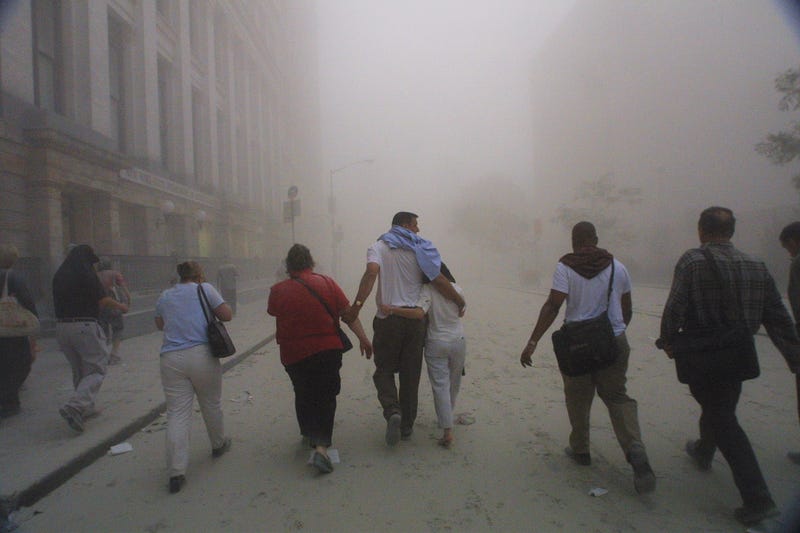
Civilians flee as a tower of the World Trade Center collapses September 11, 2001 after two airplanes slammed into the twin towers in an alleged terrorist attack. Photo credit (Photo by Mario Tama/Getty Images) Up in the sky that morning, Kaminski was just reporting traffic as usual when he saw what he called “the flash and the fireball” on the North Tower.
Even as Carroll patched him in to report what he was seeing, it wasn’t until he his pilot received word from air traffic controllers stating, “The airspace has been sterilized,” that they began to worry.
What scared them the most wasn’t the phrase itself, but rather the fact that as experienced as they were they had never heard it before. That’s when the seriousness of the situation started to settle in.
Kaminski continued to do his job until his helicopter was finally grounded. In fact, he points to one moment in the broadcast, right after the South Tower was struck, where you can hear him start talking about the traffic.
“I just needed to center myself,” he says, after realizing his hands started to shake.
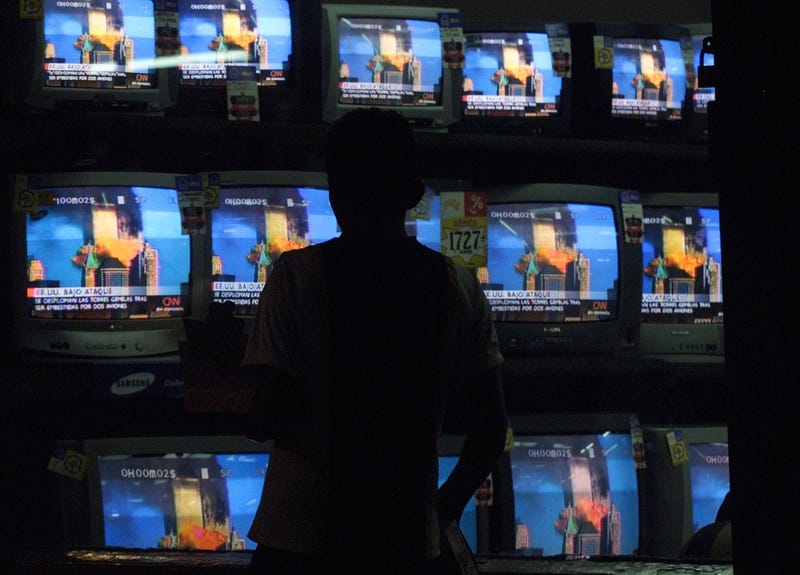
Guatemalan pedestrians watch on TV September 11, 2001 in Guatemala City, Guatemala the moment when a second plane commandeered by unknown hijackers slammed into New York’s World Trade Center. Photo credit (Photo by Andrea Nieto/Getty Images) “And doing traffic, which I had done for all these years, was exactly how I did that,” he continued, “I start talking about traffic on West Street, and on Canal Street, and I talked about vehicles coming down into [that] area from every conceivable direction. That was for me.”Guatemalan pedestrians watch on TV September 11, 2001 in Guatemala City, Guatemala the moment when a second plane commandeered by unknown hijackers slammed into New York’s World Trade Center. Photo credit (Photo by Andrea Nieto/Getty Images)
When he didn’t know what else to do, Kaminski just did his job. Looking back on that day, former 880 anchor Jeff Kaplan agrees that every reporter that day was “on autopilot.”
He recalls watching a random 9/11 special on TV one year where the entire day was synched up to pictures, video, and audio. It wasn’t until he saw people “gathering around somebody’s radio, holding hands [listening to] our voices…listening with tears coming down their faces,” he wasn’t aware of how much 880’s coverage – or any coverage – meant to the average listener that day.
He says that seeing, “the way that people perceived what [they] were doing,” made him lose it.
See WCBS Newsradio 880’s 9/11 anniversary coverage here.
-
‘Hope, Resiliency, and Strength:’ Lasting Message of WTC Site 20 Years after 9/11
Post Views: 781By Joe Connolly and Neil A. Carousso
NEW YORK (WCBS 880) — The World Trade Center site is a living, breathing memorial of the people lost in the September 11 terrorist attacks, a bustling business district and architectural wonder that stands tall as a sign of freedom and New York’s resilience in recovering from the fateful tragedy.
“I think there is a responsibility that whatever sadness and tragedy has befallen a place, at the end, there needs to be a message of hope, resilience and strength,” said architect Daniel Libeskind on the WCBS Small Business Spotlight, sponsored by Dime Community Bank.
The tear-jerking reflecting pools, the breathtaking Freedom Tower, and the awe-inspiring Oculus Transportation Hub were all part of Libeskind’s master plan to revitalize the site after 9/11.
“That’s what the spirit of humanity is. It’s not just to give in to the irretrievable and irreversible past. It’s to show that we can overcome it; we will not forget it,” he said.
Libeskind is a world-famous architect whose designs include the Jewish Museum Berlin and hundreds of modern buildings enjoyed by millions around the world from the United States to Europe and beyond. He was born and raised in Poland to Holocaust survivors and was among the last to immigrate to New York by boat into Ellis Island.
“You have to be a lucky man to be living in New York to be able to take the subway or walk somewhere into a corner of New York that is maybe 10 blocks away from you but it’s a different New York,” he said, continuing, “That’s the beauty of New York. You move a few blocks and you’re in a different neighborhood. New York is really a kaleidoscope of diversity.”
Libeskind told Joe Connolly and Neil A. Carousso that exploring and experiencing the city is a quintessential act for himself as an architect, but said it can be inspiring for anyone. Attracted to the energy of New York City, he is confident the offices at the World Trade Center will be at full capacity again after the COVID-19 pandemic, because while working from home is convenient, he believes the collaborative and creative work that can be achieved in the social space of the office is unmatched.
“There’s no doubt that offices will continue to play a key role and I really know it from my own office, which is in Lower Manhattan, that it’s so inspiring to have people back in the office, seeing each other, working together. It’s irreplaceable. You can never do it from your home that way,” Libeskind said.
He noted many offices are being reconstructed to meet the new pandemic demands of distance and ventilation and supports converting empty offices into residential buildings.
“When we were building Ground Zero, many of the great office buildings, which were already modern office buildings, were being converted to residential buildings and that has brought a lot of life to Lower Manhattan,” said Libeskind, hopeful that doing so now will improve the city’s affordability.
He told WCBS 880 he has been working on designing modern New York City Housing Authority (NYCHA) buildings for elderly residents in Brooklyn and Long Island City and believes introducing quality architecture and greater living space will attract new, talented people to live and work in New York.
Watch Joe Connolly and Neil A. Carousso’s conversation with world-famous architect Daniel Libeskind for a reflection on the World Trade Center revitalization and discussion about New York City’s post-pandemic future on the WCBS Small Business Spotlight video above.

